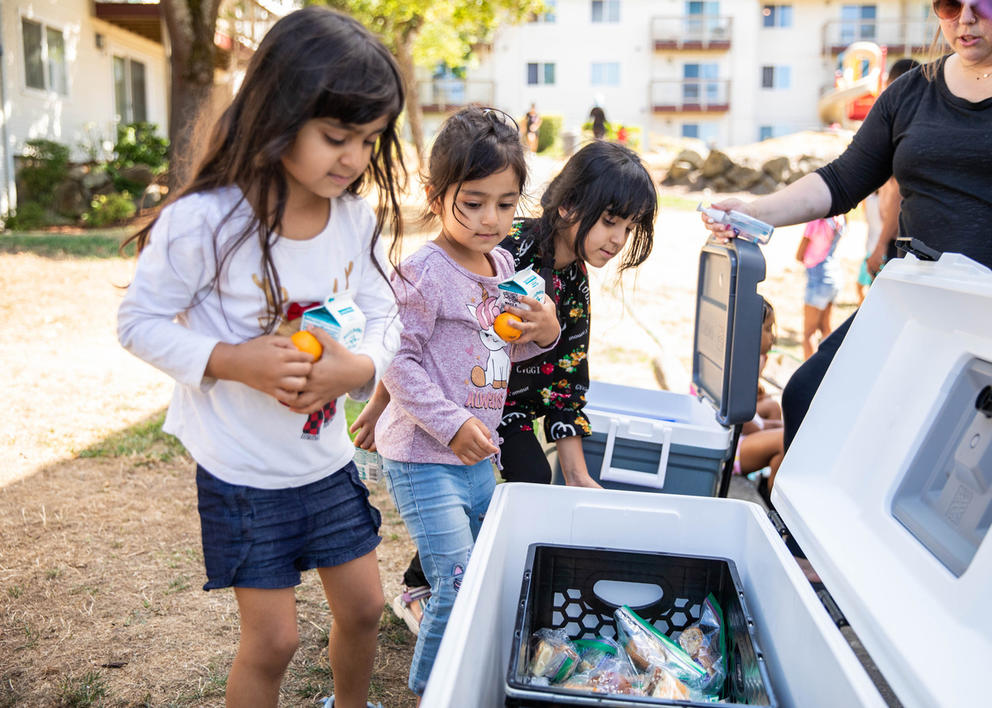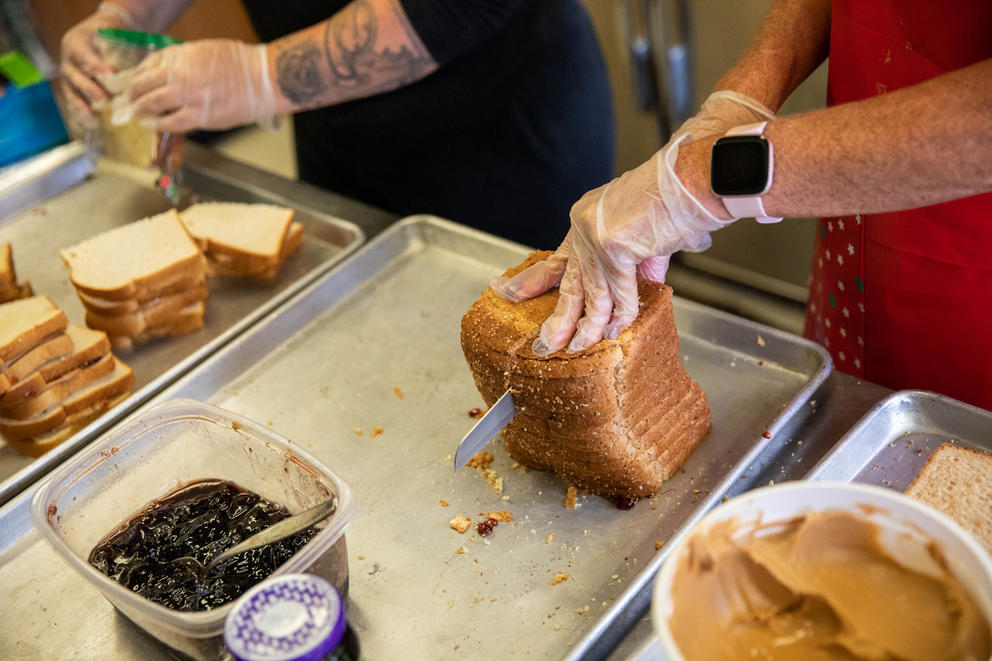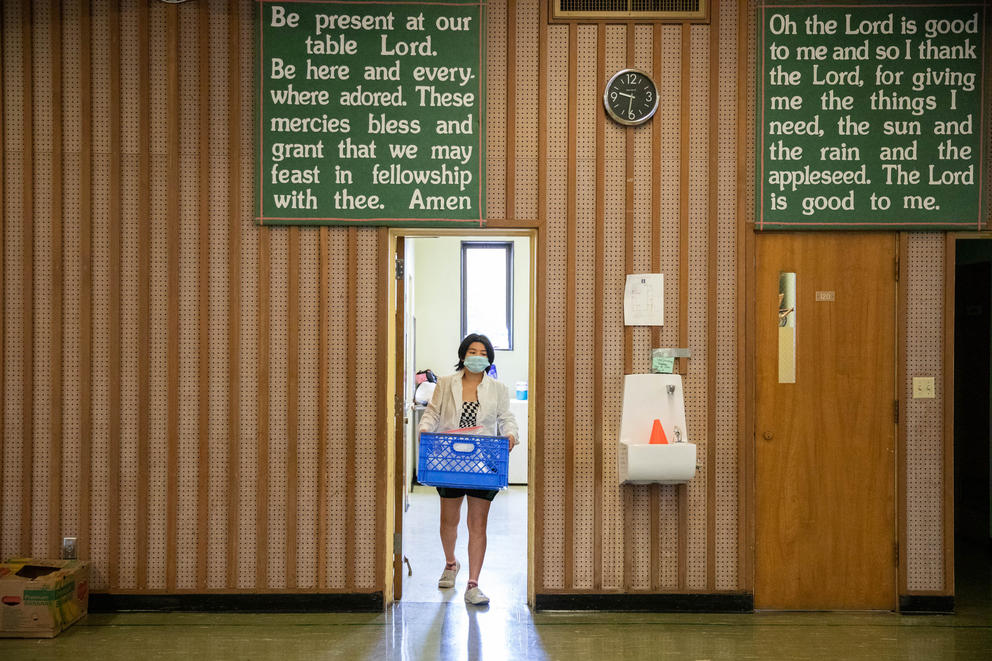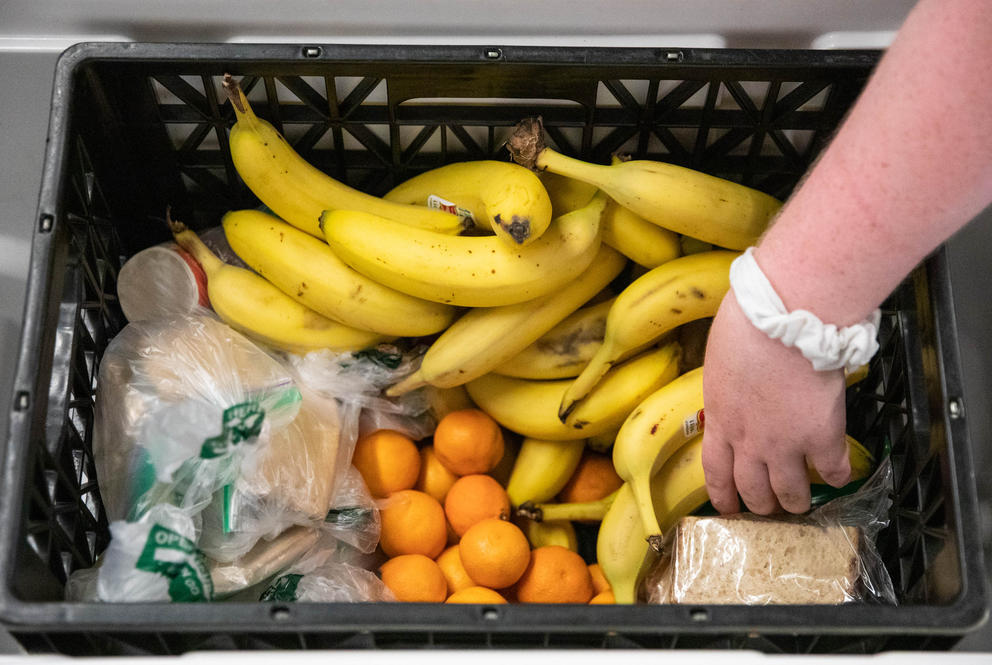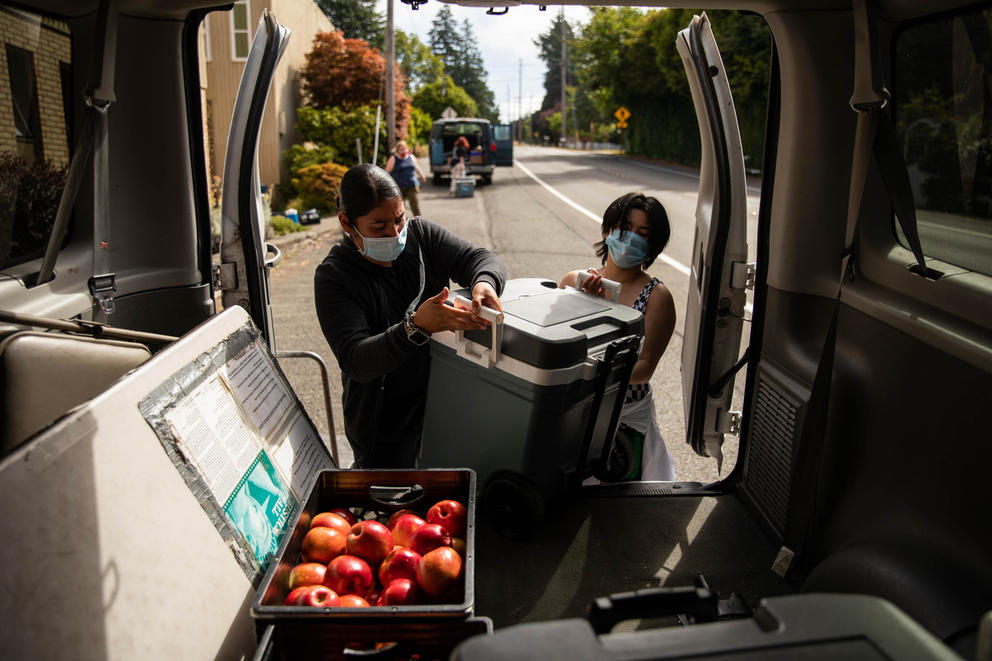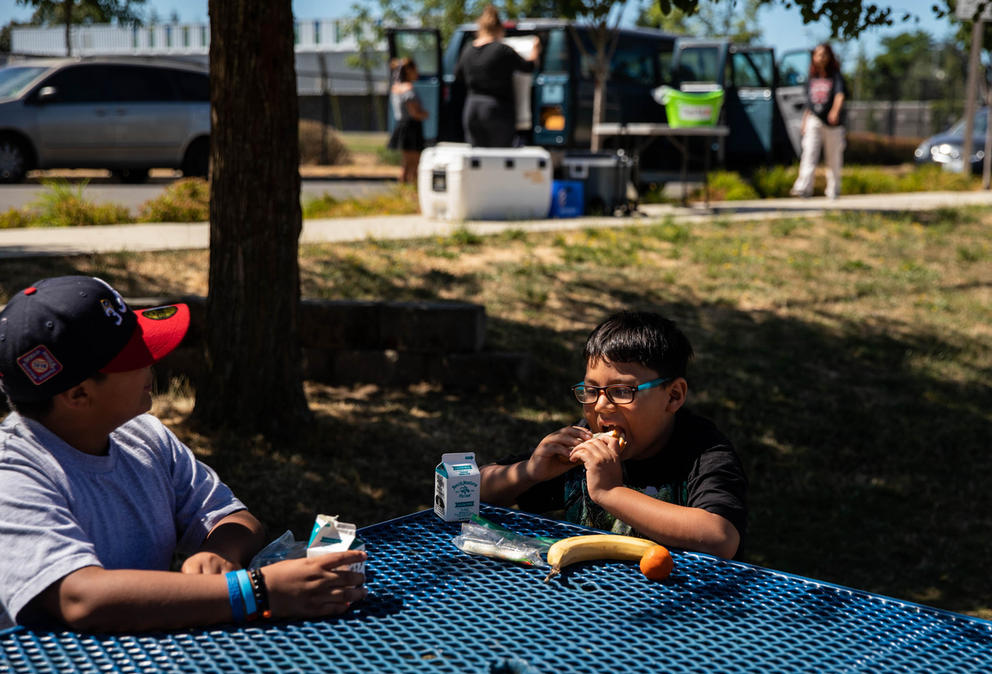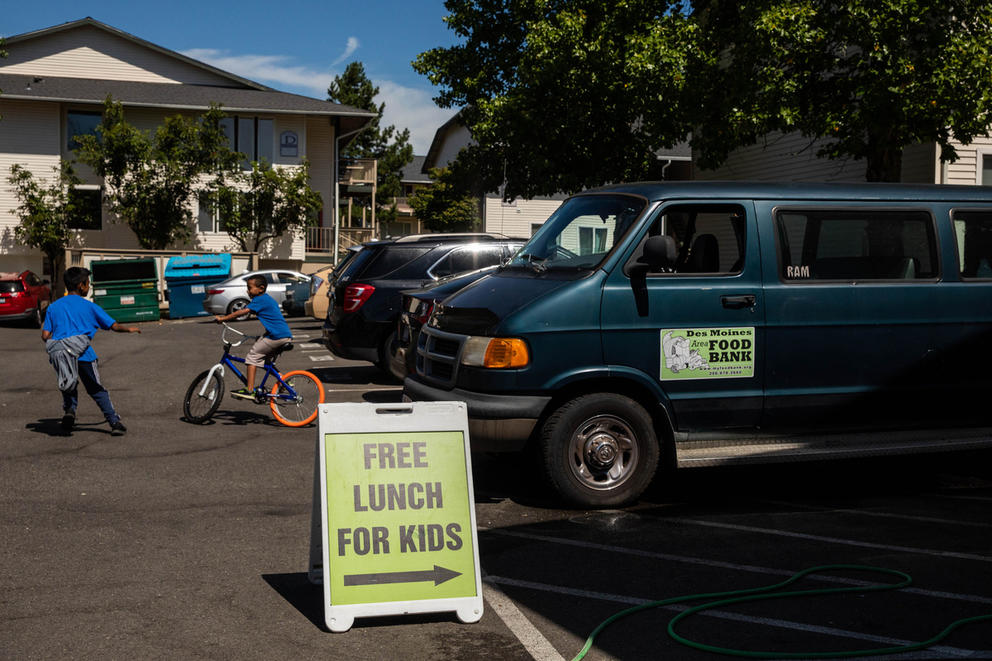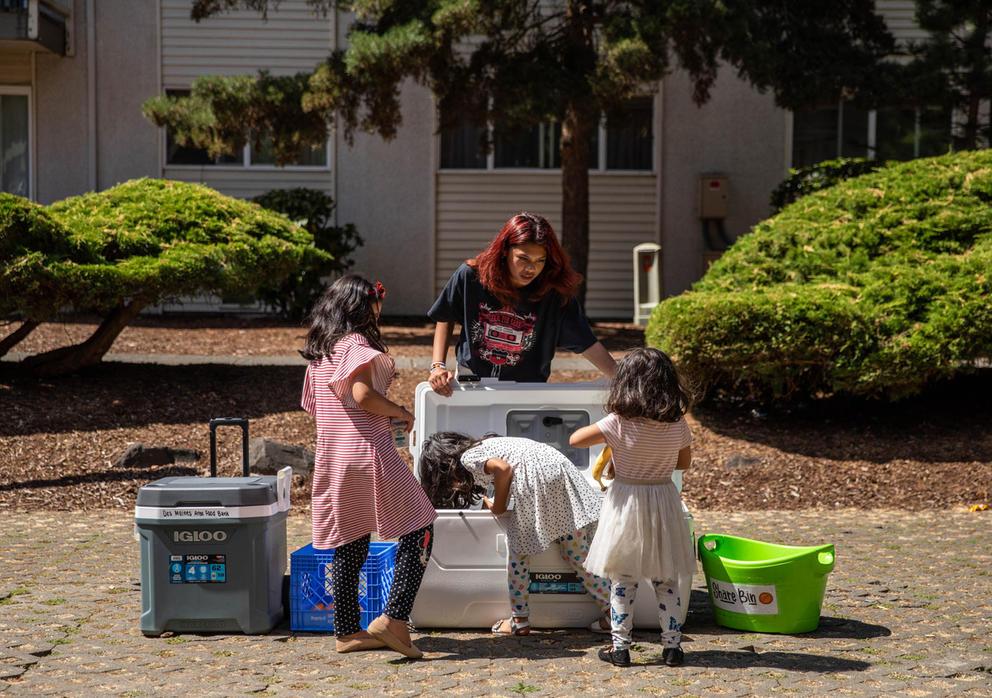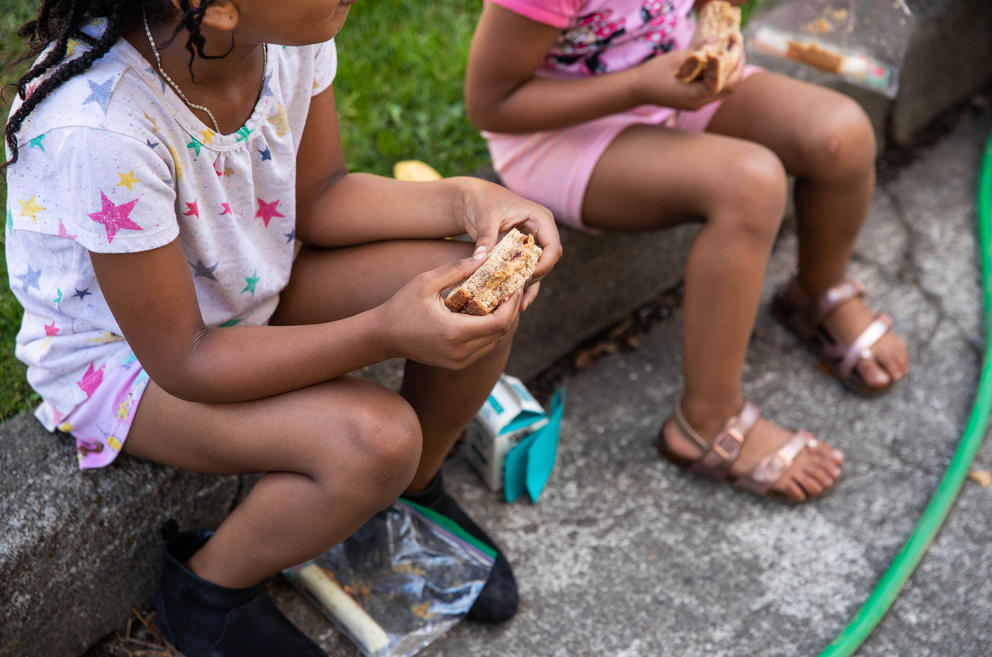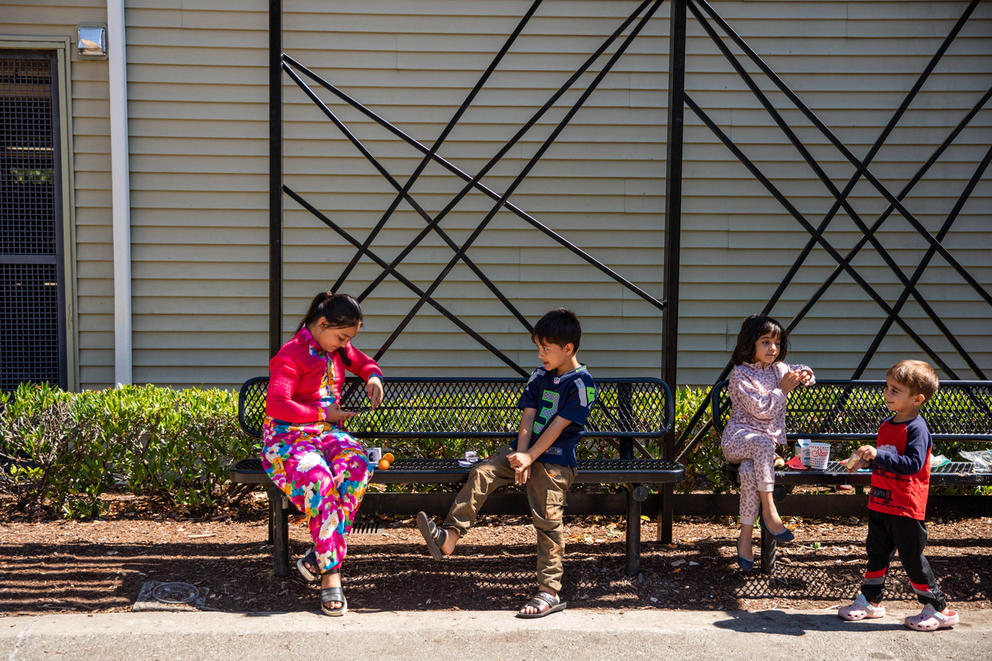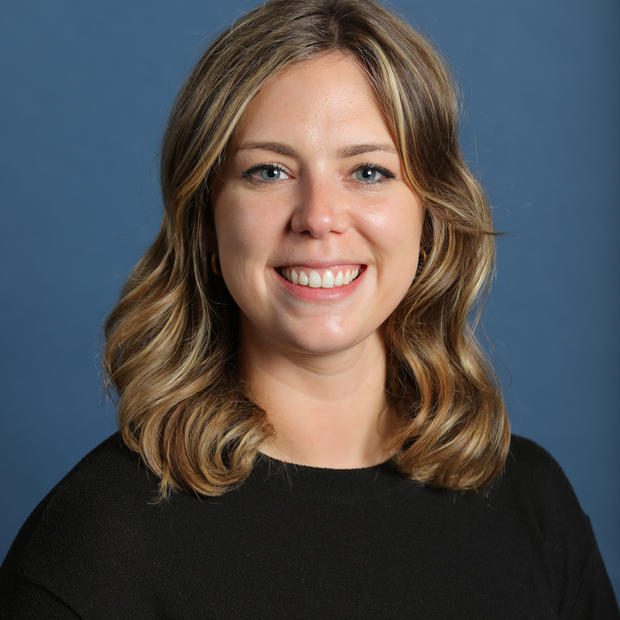Free meals for all school kids — a response to pandemic-related economic pressures these past two years — sunset this past June when federal funding for school lunches went back to pre-pandemic levels, despite calls from school lunch advocates.
A recent decision by the state legislature will help some students. A new Washington state law has set aside $44 million to more than double the number of schools where all students can continue to get free meals.
Champion expressed concerns for kids from families that will be facing — some for the first time — the need to pay for lunch or apply for free and reduced cost lunches at school.
“My anxiety for the kids is for them to have access to food when they need it,” she said.
For the past two years, the federal government extended both the free school lunch program and the summer meals program to all kids.
The Des Moines Area Food Bank was able to continue to serve meals to all kids this summer because more than 50% of families in the area qualify for free lunch, but many other summer lunch sites statewide had to stop offering the program because most of the USDA summer child nutrition rules reverted to pre-pandemic norms.
“So the last two summers, the program could be operated anywhere [in the state] and normally, that summer program can only be operated in a high-need area,” said Leanne Eko, executive director of Child Nutrition Services at the Office of the Superintendent of Public Instruction, which runs the child nutrition programs for the state.
Pandemic rules meant that during 2020 and 2021, parents and other caregivers also were allowed to pick up summer meals and take them home. Providers also were allowed to hand out lunches for several days at a time.
A summer meals program site assistant brings out snacks from the kitchen at the Des Moines Area Food Bank on Tuesday, August 16, 2022. The universal free school lunch that started during the Covid-19 pandemic is ending and now students will have to qualify for free and reduced lunches to get free lunch at schools or for summer meals. (Amanda Snyder/ Crosscut)
But now — as in pre-COVID years — the children have to be present to eat the lunches and snacks on site.
School lunch advocates had hoped that the federal government would extend the universal free lunch program for another year, or pass a lower threshold for schools to qualify for universal school lunches through the stalled Build Back Better bill.
Keeping those rules for the 2022-2023 school year would have cost the United States $11 billion.
Now that the COVID waivers have expired, many students and their families will have to pay for lunch or apply to get breakfast and lunch at school for free or reduced prices — new concepts for some young families who entered school during the pandemic.
Summer meals program workers pack up coolers full of snacks from the Des Moines Area Food Bank that will be handed out to children on Tuesday, August 16, 2022. The universal free school lunch that started during the Covid-19 pandemic is ending and now students will have to qualify for free and reduced lunches to get free lunch at schools or for summer meals. (Amanda Snyder/ Crosscut)
The universal lunch program also ends at a time when the need has been growing. In 2019-2020, 43.31% of students in Washington state were eligible for free or reduced price meals, according to the Office of the Superintendent of Public Instruction. In 2021-22, that percentage rose to 46.73%.
Families are also feeling increasingly pressured by inflation.
“It’s getting harder for families, especially for a big family like ours,” said Levit Ramirez, who has five kids between the ages of 7 and 18. Two of her sons sat down at SeaTac’s McMicken Heights Park to eat Champion’s PB&Js.
“I have four boys, and they can eat … a lot,” Ramirez said. “Any food at this time helps.”
Washington state changes
Washington’s school lunch program won’t be going back to pre-pandemic rules this fall, despite the end of the federal government program. After a change in state law this year, Washington state could double the number of schools that can offer free lunches to all students, compared to previous school years.
The new law requires schools and districts to apply to a federal program to offer meals to all students if more than 40% of the students qualify for food assistance or other financial assistance through different federal programs.
Under Washington’s new law, HB 1878, all public schools that meet that criteria must apply for the United States Department of Agriculture’s Community Eligibility Provision (CEP). Districts could also combine schools or apply as a district in order to provide universal school meals.
Before the passage of the law, about 490 schools had already been participating in the program, with a total enrollment of about 193,000 students. According to OSPI data, that number would increase by 700 schools this year. Nearly 1,200 schools with 536,000 students will participate in the program.
That would mean nearly half of all students in Washington state would attend a school offering free school meals for all, according to OSPI.
Schools operating the program would no longer have to track which students qualify for free or reduced-priced lunch, and students and their families wouldn’t garner lunch debt, which also burdens schools financially. Some school districts ended up covering tens of thousands of dollars in school lunch money that families didn’t or couldn’t pay.
“It normalizes lunch,” said Marcia Wagner, the assistant director of nutrition services in the Yakima School District, and also the president of the Washington School Nutrition Association. “I think CEP eliminates the stigma because kids don’t have to worry about whether there is money on their card.”
“It increases efficiencies, because there isn’t a person calling parents for school lunch debt. There’s no ‘lunch shaming,’ where a student feels singled out,” said bill sponsor State Rep. Marcus Riccelli (D-Spokane).
It also would help families who earn too much to qualify for other assistance programs but are also bearing the burden of increased food costs at home, or who have additional expenses outside of food.
Families at schools that do not qualify for CEP can still get free and reduced price school meals. The federal poverty level is $23,030 a year for a family of three; families of three with an annual income level of $29,939 or less qualify for free meals. Families of three with an annual income of $42,606 or less qualify for reduced price meals.
However, offering the food to all students also comes at a price. Normally, districts receive some federal reimbursement for all school meals, but that doesn’t cover the costs, which is why students generally have to pay for lunch. Reimbursements are higher for meals given to students whose families qualify for food assistance, but that added money doesn’t cover the cost of feeding all the kids. While community eligibility starts at 40% of kids qualifying, the ledger balances at about 62%.
That risks school districts running their food programs at a loss. For that reason, many districts declined to apply for community eligibility despite meeting the economic criteria and having community needs, Riccelli said.
The $44 million allocated by the state is meant to offset those district costs, Riccelli said.
Wagner said district nutrition programs welcome the change.
“We don’t want to be bill collectors. We don’t want to embarrass kids. But we’re expected to make our programs break even. We’re expected to be self-supporting. That’s like expecting a restaurant to say you can’t collect money, you gotta feed them anyway. We would rather just feed the kids free,” Wagner said.
Schools that are coming online next year with CEP include the Auburn School District, which announced to its families this month that it will offer universal free lunches at all schools through 2026.
“It removes the barrier for a lot of our families,” said Vickie Alonzo, Auburn School District spokesperson. Families no longer will have to fill out paperwork for their children to receive the school meals, which could sometimes be daunting, for instance, for families who do not speak English as a primary language.
About 61% of students in the district live in a low-income home, according to district data.
Separately, the Auburn School District is also budgeting $600,000 to provide its 17,000 students with school supplies, including notebooks, pens, erasers and earbuds.
“We see it as a matter of equity,” Alonzo said. “Every student needs school supplies to be successful. It’s a win for us and our community.”
Wagner, of Yakima, said meeting kids’ basic needs goes a long way in making sure that education is effective.
“It takes that strain off their kids. If they’re not nourished at schools, they get headaches, they have behavior problems, they can’t learn,” Wagner said. “You can do all the right things in the classroom, but if the kids don’t have their basic needs met, they aren’t successful.”
Update: This story has been updated with more recent Community Eligibility Provision data from OSPI.

